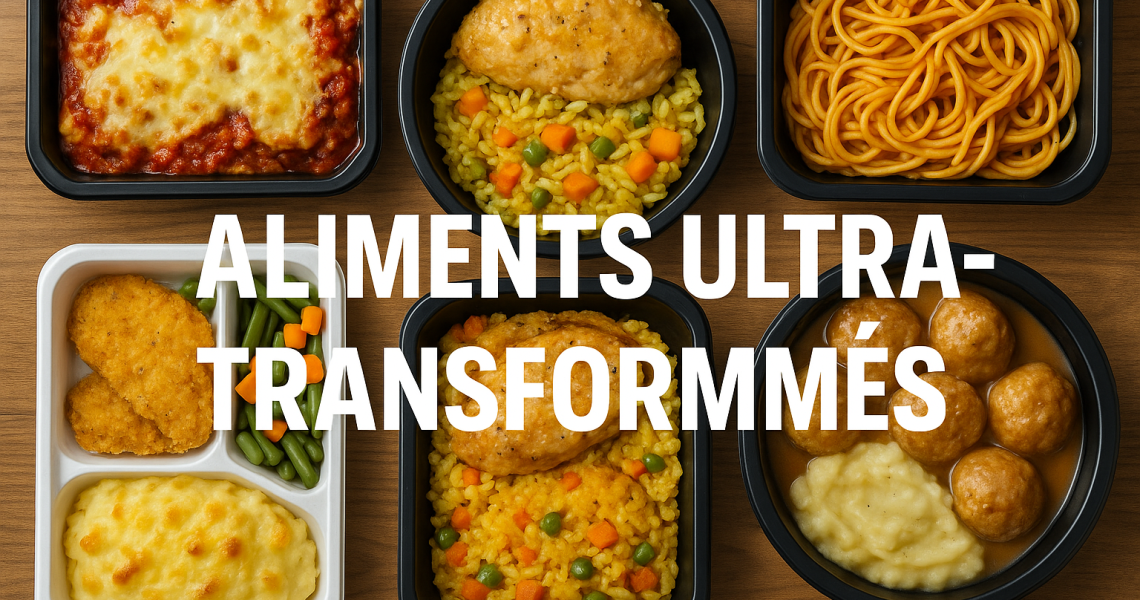Every day, we hear that “ultra-processed foods” are responsible for our ills: obesity, cardiovascular disease, diabetes… But what if this demonization was too simplistic? A recent large-scale British study questions this dominant view, showing that it may not be so much the degree of processing that is to blame, but rather our perceptions, beliefs and emotions. In this article, you’ll discover:
- What “ultra-processed” really means
- What the latest research suggests
- Why our mental representations can outweigh industrial classification
- Implications for public health policy
- Pragmatic ways to take action in our daily lives
My objective? To provide you with a nuanced, rigorous and actionable vision – not an easy slogan.
1. What do we really mean by “ultra-processed foods”?
NOVA classification: useful but contested
The NOVA system, often used in public nutrition, divides foods into four groups according to their degree of industrial processing. The fourth group includes “ultra-processed” foods: industrial products rich in additives, sugars, flavorings, stabilizers, etc. (sweet drinks, chocolate bars, ready-made meals, etc.).
But this categorization has its limits:
- It mixes in the same basket very dissimilar products (e.g. sweetened drinks, reformulated vegetable substitutes);
- It does not account for the nutritional variability within this category;
- It does not take into account sensory appeal, cultural habits or consumer contexts.
Why this category has become “public enemy number 1
For several years now, the media and politicians have been pointing to ultra-processed foods as a major driving force behind the epidemic of obesity, cardiovascular disease and even cognitive disorders. The result: warning labels, advertising restrictions, taxes, bans on sales in certain areas – all based on the assumption that “the more processed the food, the more harmful it is”.
But science is evolving.
2. New study, new perspectives: what British research reveals
A team of researchers examined the responses of more than 3,000 British adults to 400 foods depicted in photos. Their objectives: to measure food “liking” (what they find pleasurable) and their propensity for hedonic overconsumption (i.e. eating beyond satiety).
Highlights
- The NOVA ranking explains only 2% of the differences in appreciation between foods, and 4% of over-consumption behaviors.
- By contrast, perceptual attributes (taste, texture, fat, sweetness) and the beliefs individuals hold about a food (e.g. “it’s industrial/natural/artificial/healthy/caloric”) account for a much larger share.
- When a food is perceived as “highly processed”, it’s more likely to be eaten without restraint, even if its actual composition doesn’t justify it.
- By combining nutritional data (41%) and beliefs/perceptions (37%), the researchers were able to predict 78% of variations in the propensity to overeat.
What this tells us
Industrial classification alone (NOVA or other) is not enough to explain why we sometimes consume “too much” of a food. Our mental representations – what we believe, feel and anticipate – play a crucial role.

3. Why our beliefs often trump classification
The power of representations
When a product is labelled “ultra-processed”, it sets off a chain reaction of guilt, junk food and danger. Even a product that is nutritionally equivalent but perceived as “artisanal” or “natural” will often be better tolerated – or even over-consumed with fewer scruples.
Taste, satiety, emotion
The same two foods can be judged differently depending on the environment, marketing, presentation, or even the time of day. Emotional cravings (comfort, stress, conviviality) influence our choices.
What’s more, reformulating a product (reducing sugar, fat, salt) is not always enough; this reformulation must be accompanied by management of taste, satiety and sensorimotor expectations.

4. What to make of current nutrition policies?
Limits of “prohibited/taxed/alerted” approaches
- They run the risk of demonizing foods that can be part of a balanced diet (e.g. fortified cereals, protein substitutes).
- They can be confusing for the general public, giving contradictory signals (a processed product but a “healthy option”?).
- They do not address the psychological, social and cultural dimensions of eating habits.
Towards more intelligent, contextualized nutrition
The researchers suggest three key directions:
- Nutritional education: teaching people not just to read labels, but to understand their hunger signals, cravings and consumption contexts.
- Reasoned reformulation: designing products that are more satiating, less hyper-appetizing, while preserving taste pleasure.
- Acknowledging food motivations: recognizing that eating is also an emotional, social and identity-related act – not just a physiological need.
5. Day-to-day: what to do?
- Favoring minimally processed foods, but without excessive guilt: a processed product can find its place.
- Cultivate awareness of your perceptions: question what you feel when you see “ultra-transformed”.
- Eat in a favourable context: without stress, without distraction, with conscious moderation.
- Introduce variety, textures and homemade dishes whenever possible.
- Beware of “simplistic diets” and the psychological punishment that sometimes accompanies dietary injunctions.
Conclusion:
Our relationship with food is more complex than the simple “processed/unprocessed” opposition. The British study shows that our beliefs, sensations and mental representations play a massive role in our behaviors.
For public policies as for our daily choices, the challenge is to move away from a Manichean vision to a more nuanced approach, based on education, psychological understanding, intelligent reform and respect for pleasure.
